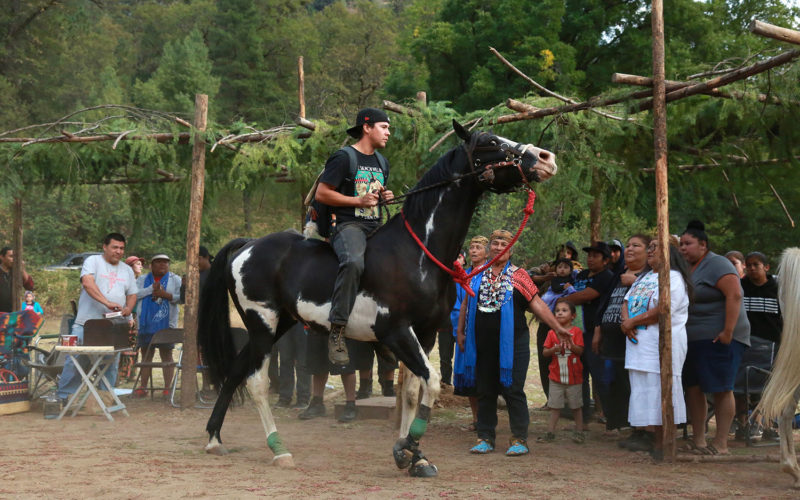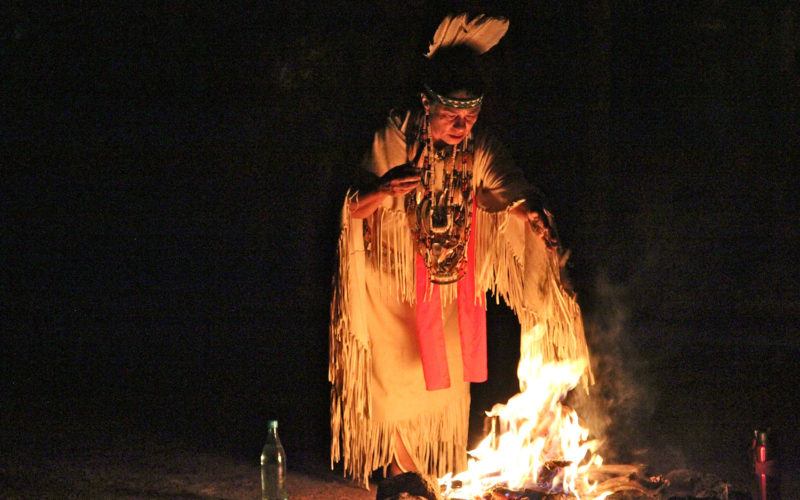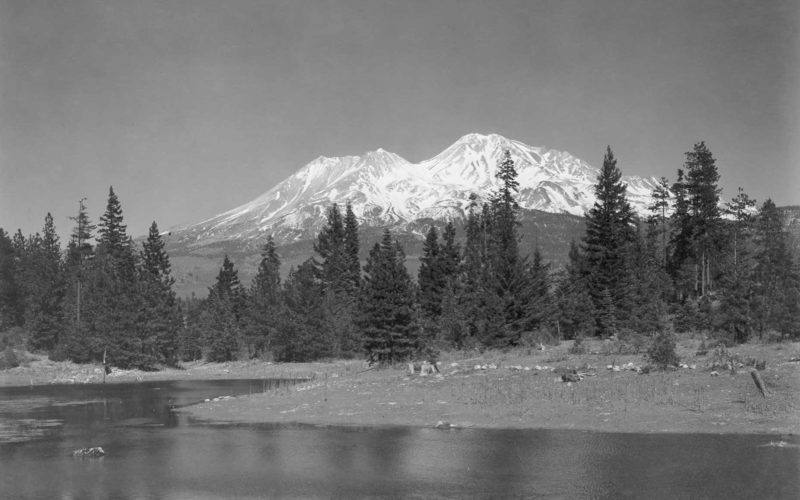 High on Buliyum Puyuuk (Mt. Shasta) is a spring, the origin place of the Winnemem Wintu. In their story, the first humans had no voice. They were vulnerable, and needed help. The mighty salmon gave their own voice to the people. From that time on, the fish were silent, and the Winnemem promised to always speak for them.
High on Buliyum Puyuuk (Mt. Shasta) is a spring, the origin place of the Winnemem Wintu. In their story, the first humans had no voice. They were vulnerable, and needed help. The mighty salmon gave their own voice to the people. From that time on, the fish were silent, and the Winnemem promised to always speak for them.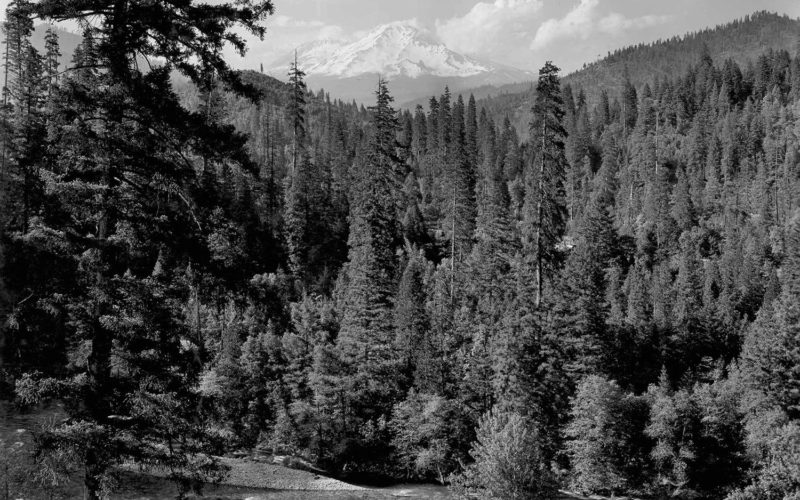 Winnemem Wintu Lands: From Mt. Shasta, three great rivers flow south. Winnemem lands run along the middle river.
Winnemem Wintu Lands: From Mt. Shasta, three great rivers flow south. Winnemem lands run along the middle river.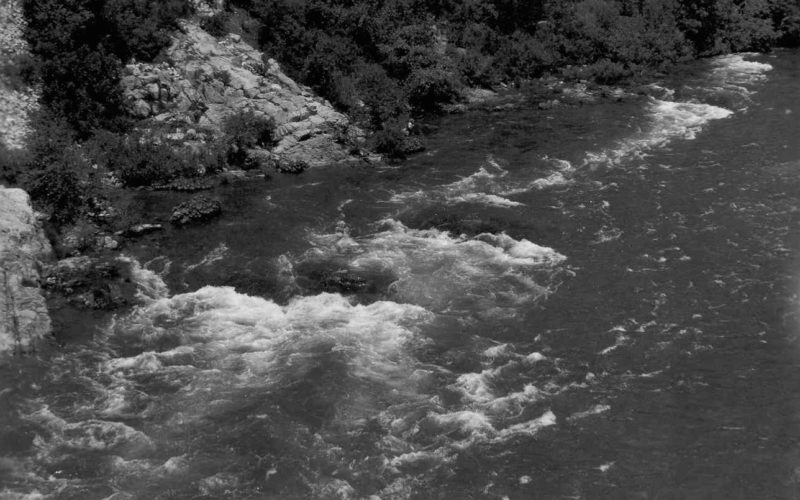 Winnemem means middle water, the McCloud, between the Sacramento on the west, and the Pit River on the east.
Winnemem means middle water, the McCloud, between the Sacramento on the west, and the Pit River on the east.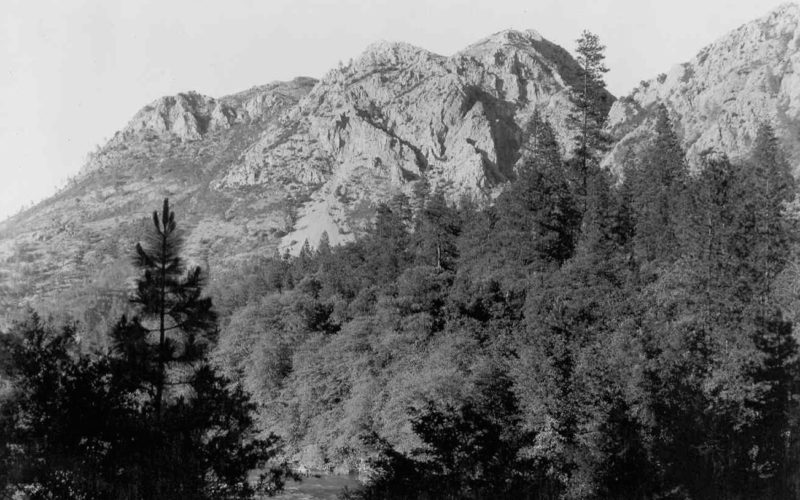 These lands have always given food, water, shelter, and medicine to Winnemem people. The entire landscape is treasured as spiritual. At important sites, traditional interactions take place between the people, nature, and the sacred.
These lands have always given food, water, shelter, and medicine to Winnemem people. The entire landscape is treasured as spiritual. At important sites, traditional interactions take place between the people, nature, and the sacred.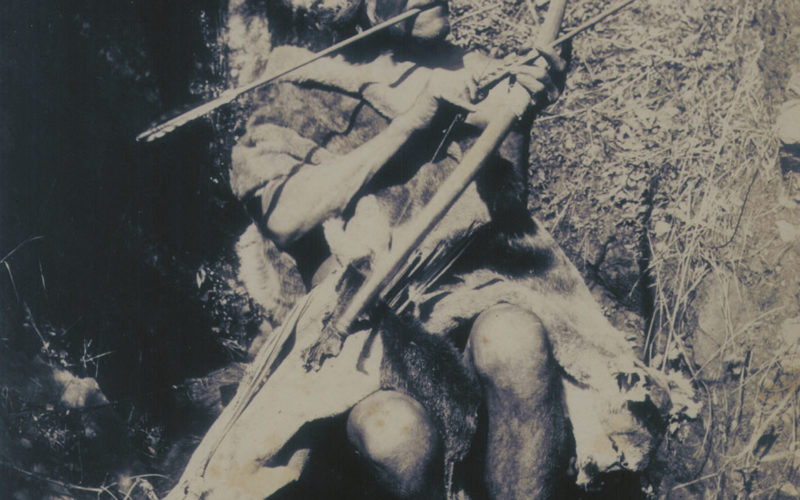 Winnemem people enjoyed summers up in the mountains, and mild winters down near the river. There were social visits with neighboring tribes and villages. Food and water were abundant, which helped to maintain peace.
Winnemem people enjoyed summers up in the mountains, and mild winters down near the river. There were social visits with neighboring tribes and villages. Food and water were abundant, which helped to maintain peace.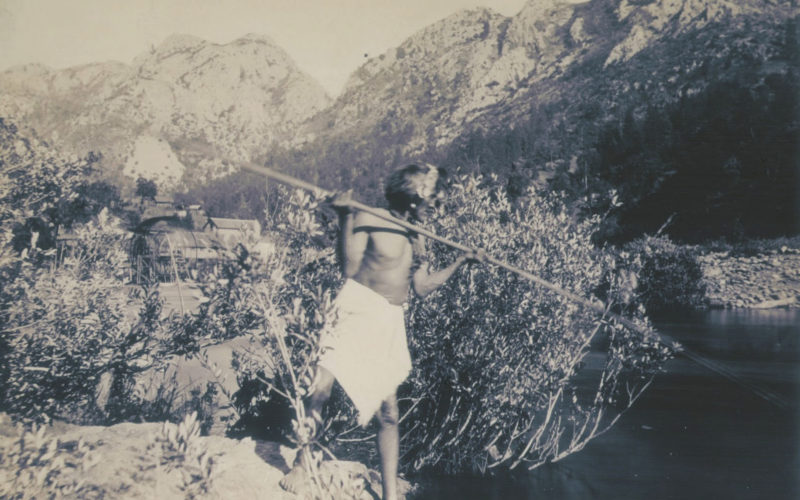 Food included deer and acorns, and the prized salmon, which could be speared and eaten fresh or dried.
Food included deer and acorns, and the prized salmon, which could be speared and eaten fresh or dried.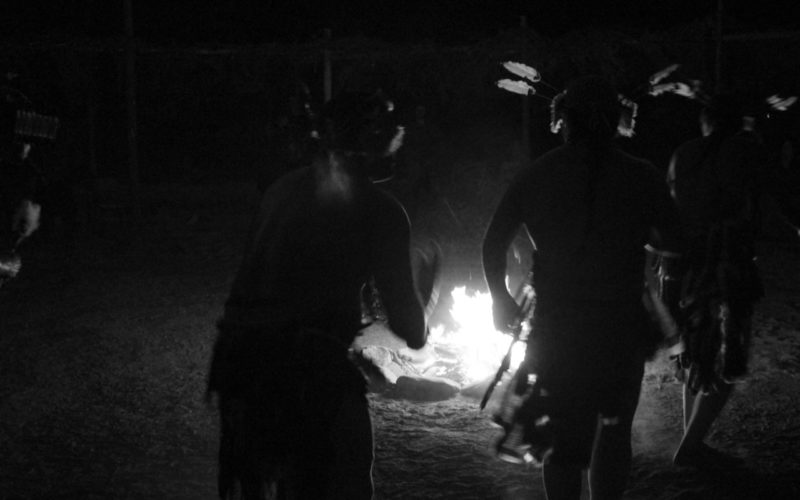 The ceremonies of the people followed a seasonal cycle, with songs, dances, and pilgrimage up the river to the mountain.
The ceremonies of the people followed a seasonal cycle, with songs, dances, and pilgrimage up the river to the mountain.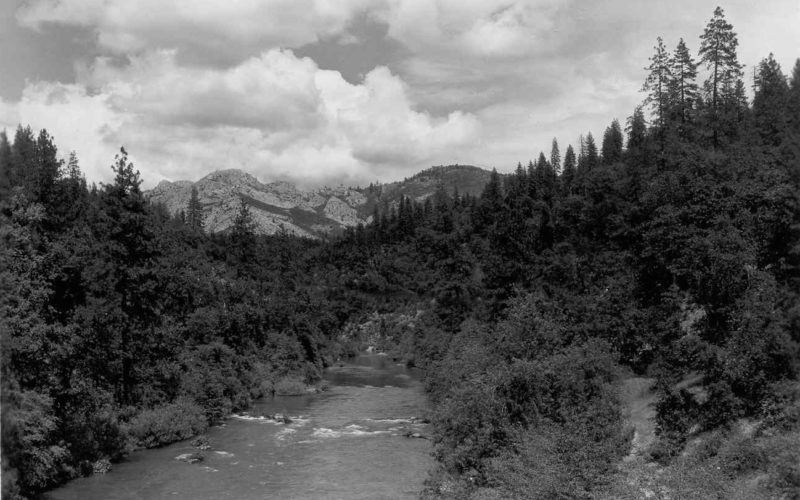 The people traveled far to hunt, gather, trade, and pray. The salmon traveled much farther.
The people traveled far to hunt, gather, trade, and pray. The salmon traveled much farther.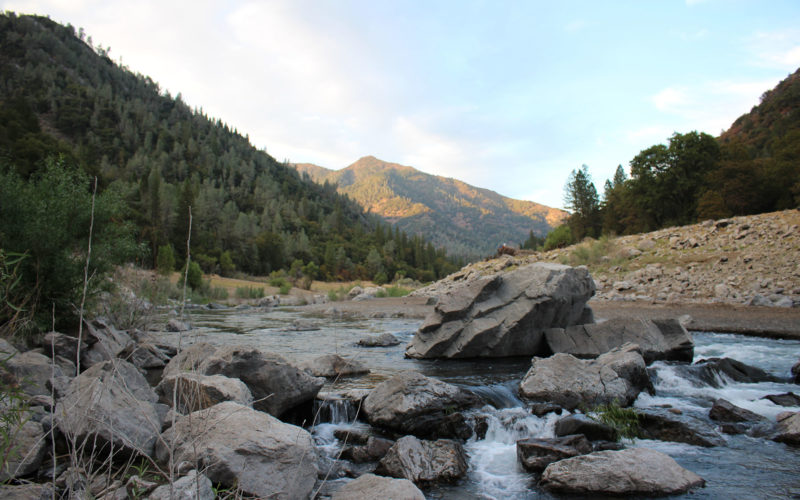 When they returned from their years at sea, the salmon swam north towards the mountain.
When they returned from their years at sea, the salmon swam north towards the mountain.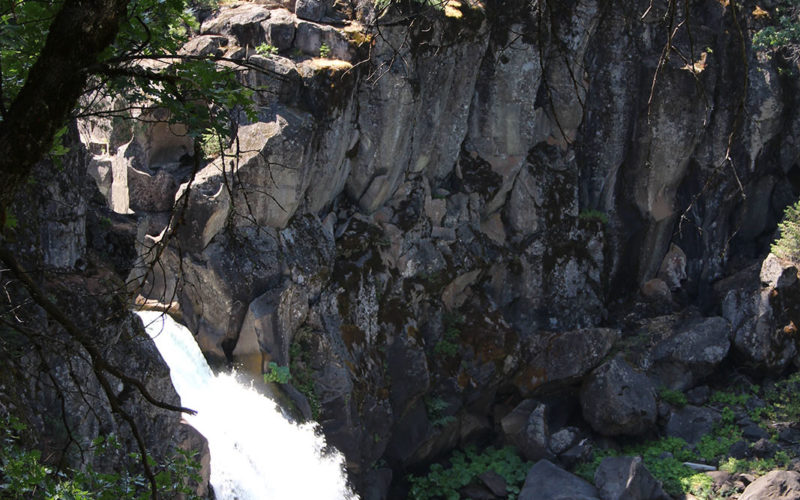 When they came to the falls, Winnemem would scoop the great fish in baskets and carry them higher, so the tired salmon could reach the coldest waters.
When they came to the falls, Winnemem would scoop the great fish in baskets and carry them higher, so the tired salmon could reach the coldest waters.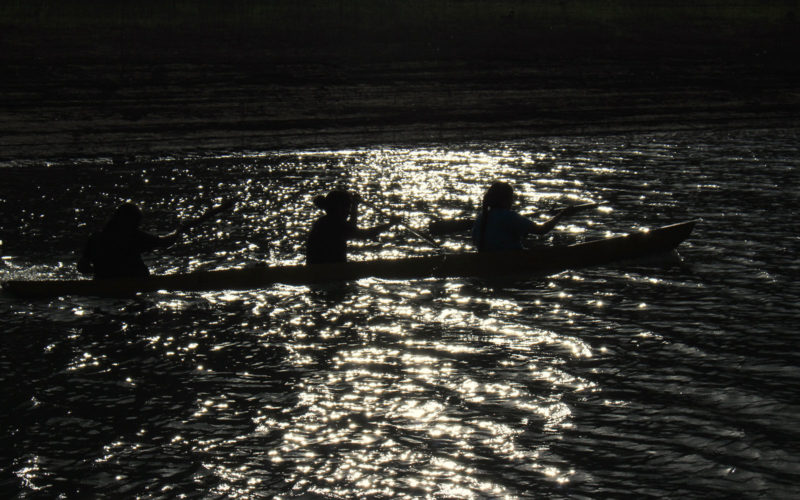 The people have always believed that if the salmon become extinct, the Winnemem people will also be gone.
The people have always believed that if the salmon become extinct, the Winnemem people will also be gone.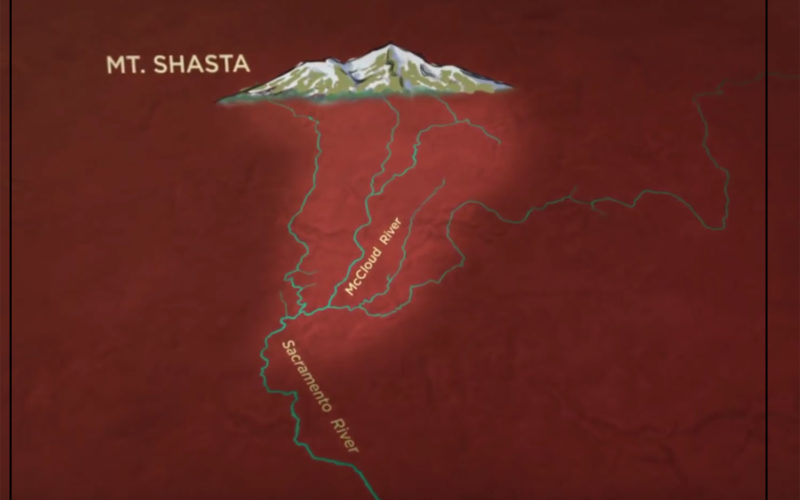
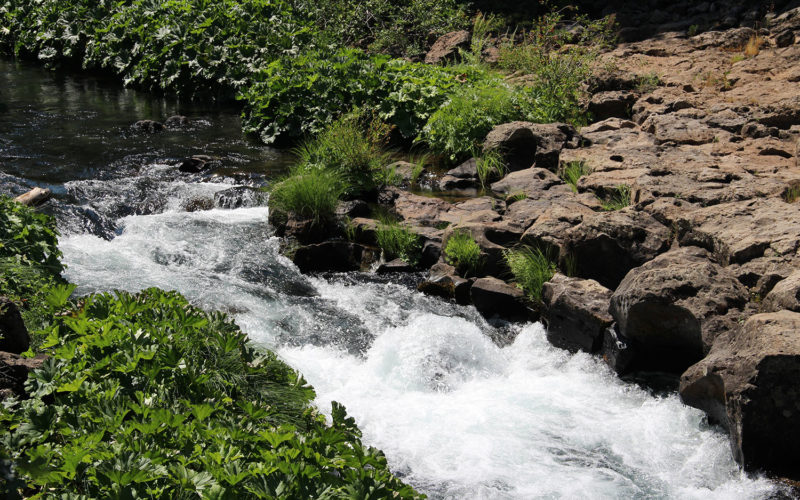 The Winnemem Wintu lived on their river for thousands of years before newcomers renamed it the McCloud River.
The Winnemem Wintu lived on their river for thousands of years before newcomers renamed it the McCloud River. After the first European explorers and trappers reached the river in the early 1800s, many Native people died from foreign diseases.
After the first European explorers and trappers reached the river in the early 1800s, many Native people died from foreign diseases. The discovery of gold in 1848 brought a rush of Americans and foreigners to California.
The discovery of gold in 1848 brought a rush of Americans and foreigners to California. Not much gold was found in the McCloud River...
Not much gold was found in the McCloud River... ...but that did not protect the peaceful Winnemem people from government bounty hunters, or from massacres by settlers during those violent times.
...but that did not protect the peaceful Winnemem people from government bounty hunters, or from massacres by settlers during those violent times.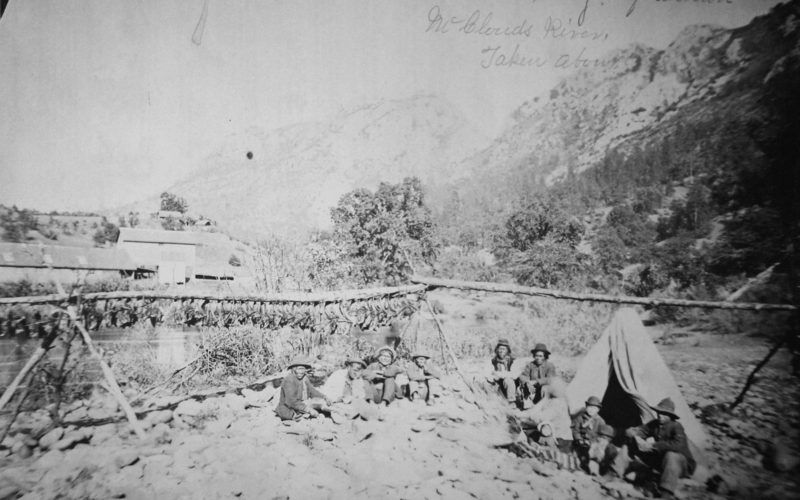 In 1872, a government fish hatchery was established at a prime Winnemem salmon fishing spot. Despite their fear and anger towards the outsiders,
In 1872, a government fish hatchery was established at a prime Winnemem salmon fishing spot. Despite their fear and anger towards the outsiders,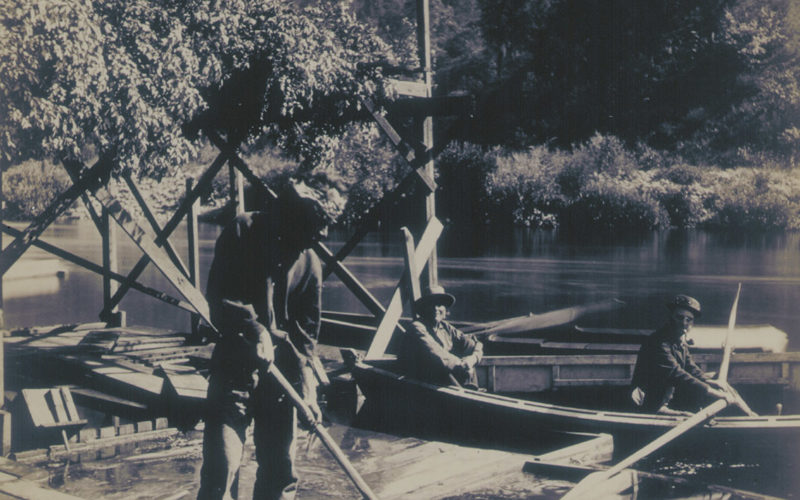 many Winnemem went to work for the hatchery, which sent salmon eggs to rivers across the U.S. and as far as New Zealand.
many Winnemem went to work for the hatchery, which sent salmon eggs to rivers across the U.S. and as far as New Zealand.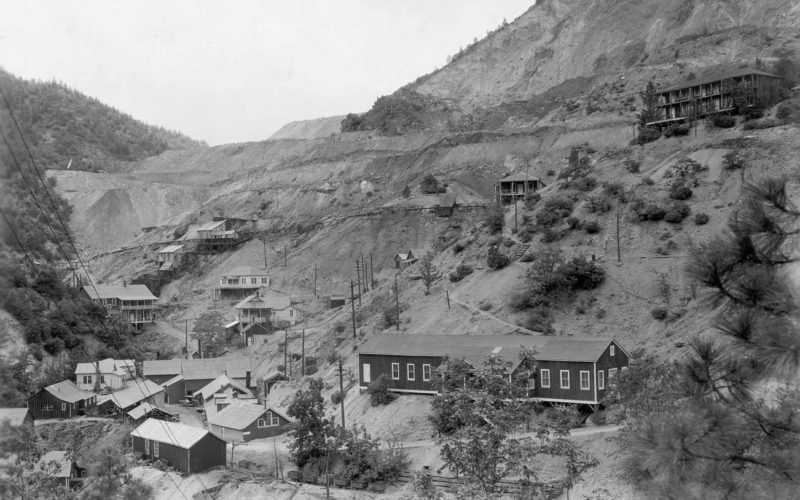 A copper mining boom brought a new rush of people to the region. The air, land and water were fouled by the mining.
A copper mining boom brought a new rush of people to the region. The air, land and water were fouled by the mining. Trees near the copper smelters died from sulphuric gases.
Trees near the copper smelters died from sulphuric gases. The fish hatchery closed down.
The fish hatchery closed down. Born in 1907, Florence Jones was a Winnemem healer. She went on to lead her people through the 20th century, a difficult time.
Born in 1907, Florence Jones was a Winnemem healer. She went on to lead her people through the 20th century, a difficult time.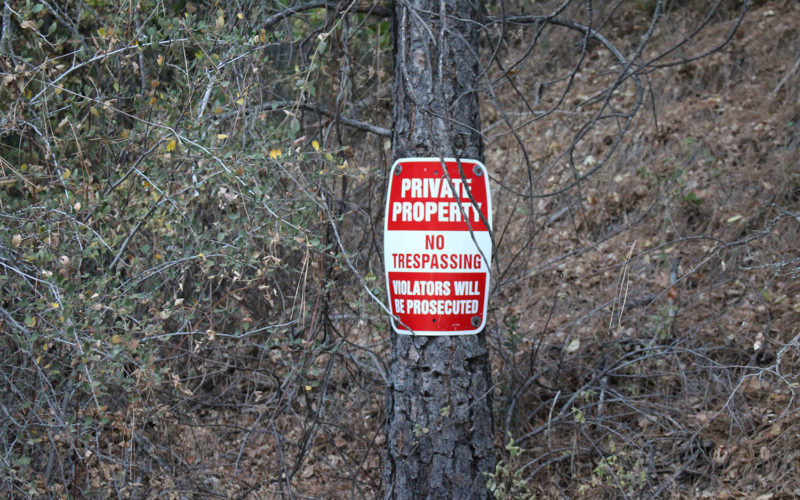 The Winnemem Wintu were forced off their lands by miners, settlers, and government agents. Many traditional Winnemem lands were bought by wealthy San Francisco families.
The Winnemem Wintu were forced off their lands by miners, settlers, and government agents. Many traditional Winnemem lands were bought by wealthy San Francisco families. In the 1930s came the construction of Shasta Dam.
In the 1930s came the construction of Shasta Dam. Winnemem lands were flooded for the new reservoir, and the people had to leave their river.
Winnemem lands were flooded for the new reservoir, and the people had to leave their river.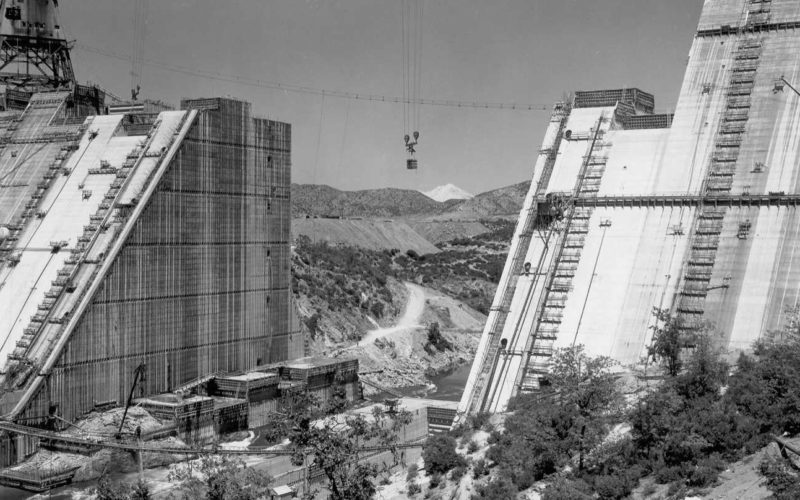 As the dam was built, the needs of the salmon were also ignored.
As the dam was built, the needs of the salmon were also ignored. No passageway was constructed to allow the world-famous McCloud River fish...
No passageway was constructed to allow the world-famous McCloud River fish... ...to reach their spawning grounds in the upper rivers.
...to reach their spawning grounds in the upper rivers.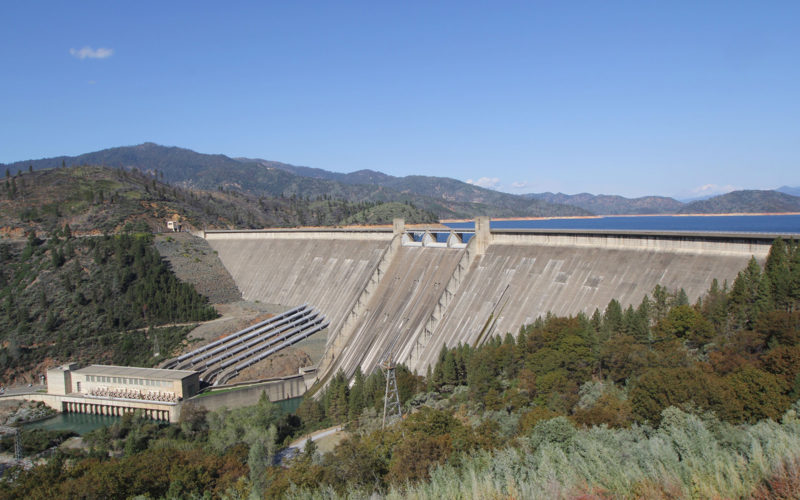 Blocked by the dam, the Chinook salmon are now an endangered species.
Blocked by the dam, the Chinook salmon are now an endangered species. But they do not give up. They continue to migrate up the river from the sea and lay their eggs to become the next generation of fish.
But they do not give up. They continue to migrate up the river from the sea and lay their eggs to become the next generation of fish.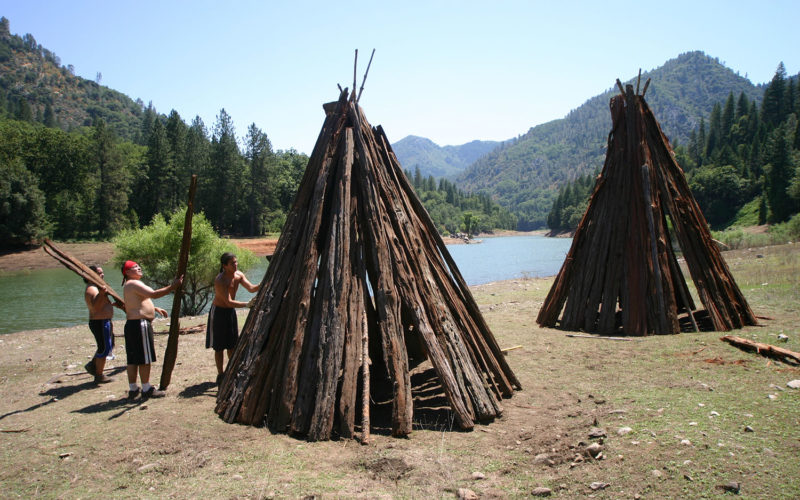 The Winnemem people still return to the McCloud River, above the dam and reservoir, for ceremony.
The Winnemem people still return to the McCloud River, above the dam and reservoir, for ceremony.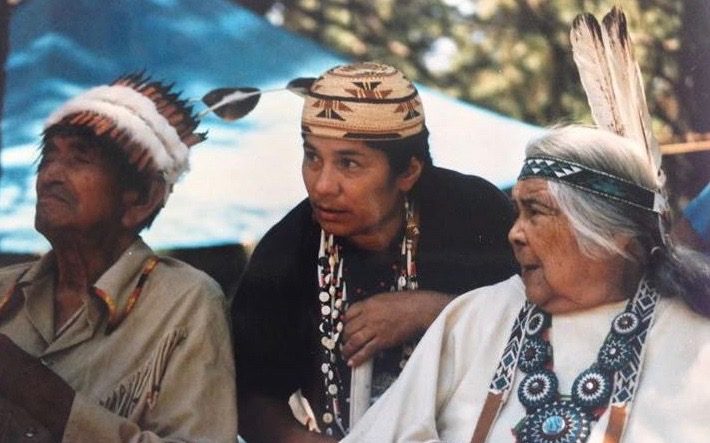 Caleen Sisk, in the center, has succeeded Florence Jones as Chief.
Caleen Sisk, in the center, has succeeded Florence Jones as Chief.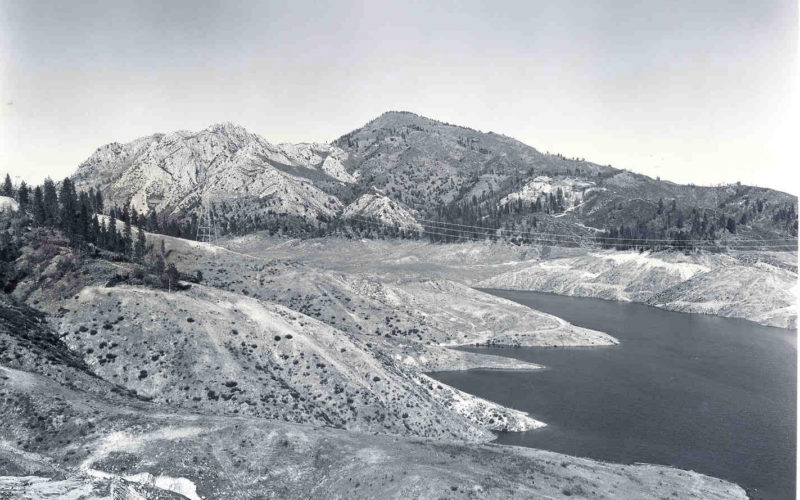 The Winnemem people continue to speak up...
The Winnemem people continue to speak up...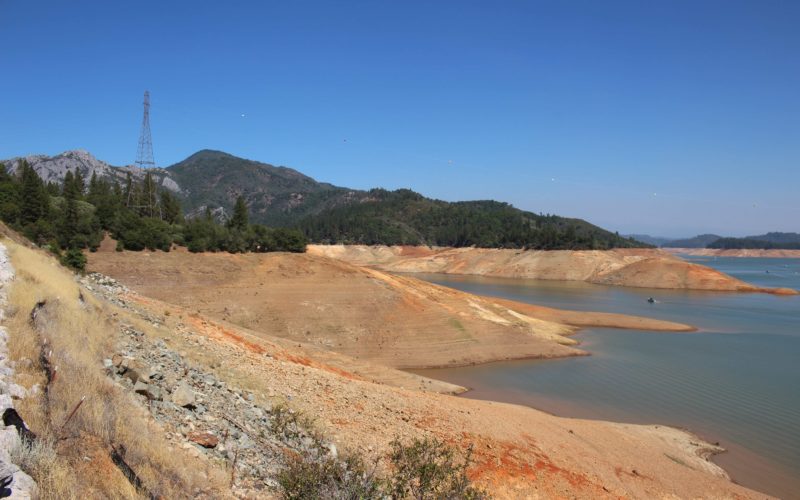 ...for the restoration of their sacred lands, and for bringing back the salmon.
...for the restoration of their sacred lands, and for bringing back the salmon. And the McCloud River salmon that were sent from the hatchery long ago?
And the McCloud River salmon that were sent from the hatchery long ago? Of all the rivers they were sent to, it appears they only thrived in one other place: a river in New Zealand.
Of all the rivers they were sent to, it appears they only thrived in one other place: a river in New Zealand.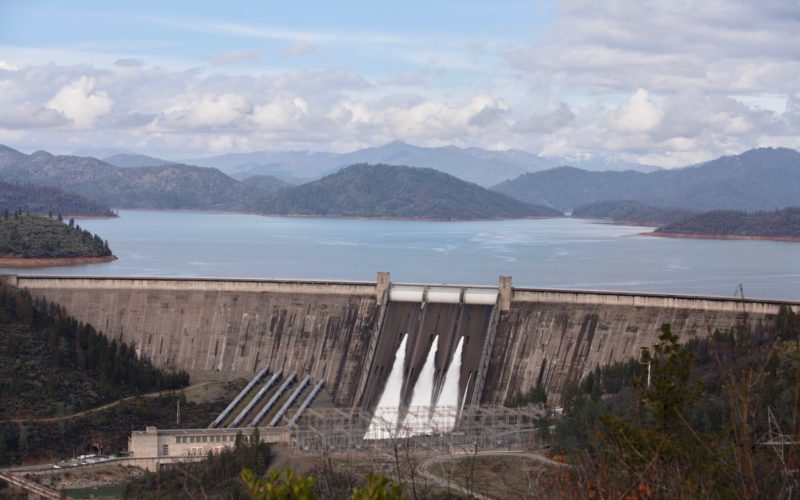 The Winnemem tribe has proposed reintroducing Rakaia River salmon back into the McCloud, and the creation of a fish swimway around Shasta Dam.
The Winnemem tribe has proposed reintroducing Rakaia River salmon back into the McCloud, and the creation of a fish swimway around Shasta Dam.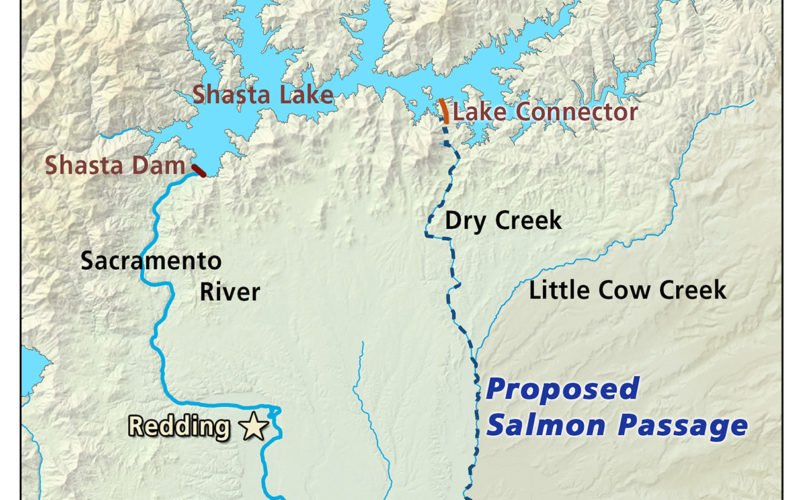 Click map image to download
Click map image to download
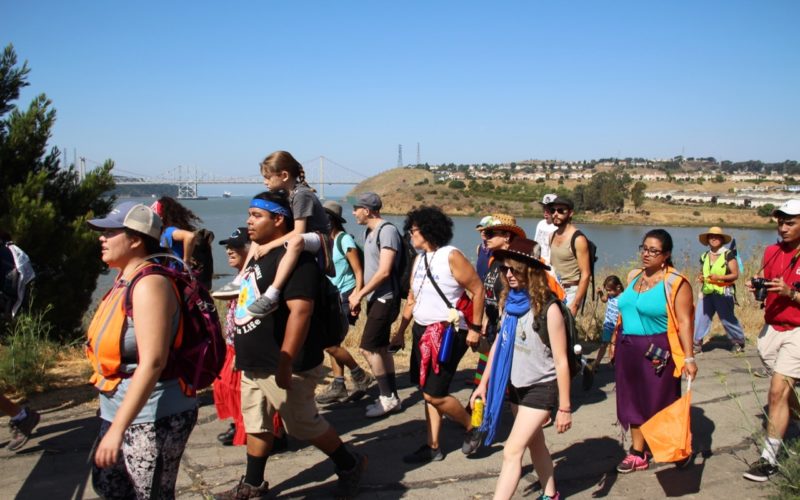 The Run4Salmon is the Winnemem Wintu Tribe's pilgrimage from San Francisco Bay to the McCloud River.
The Run4Salmon is the Winnemem Wintu Tribe's pilgrimage from San Francisco Bay to the McCloud River. The participants follow the route of the migrating salmon...
The participants follow the route of the migrating salmon...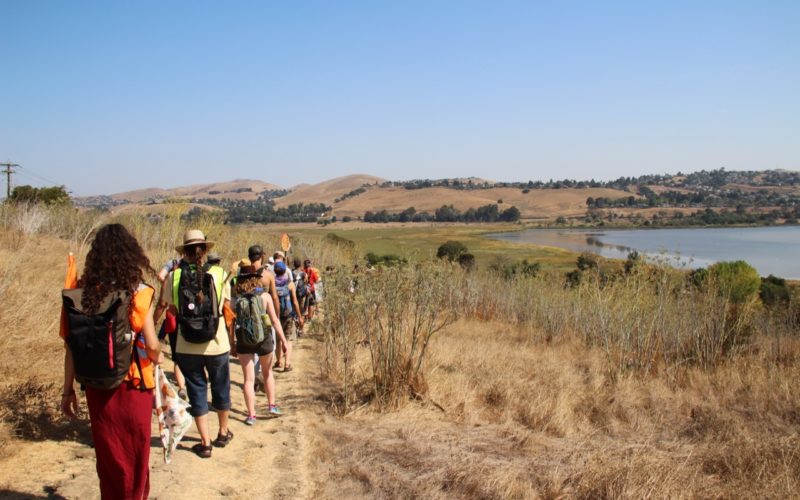 ...walking, running, bicycling, paddling and riding horseback up the river.
...walking, running, bicycling, paddling and riding horseback up the river.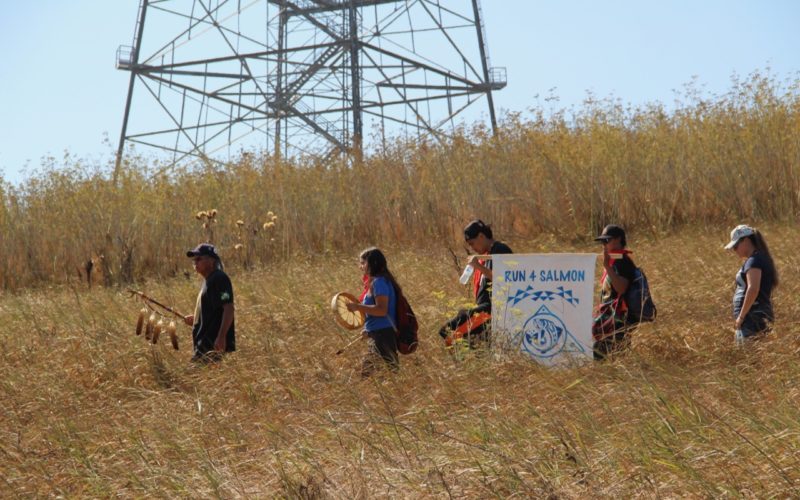 Along the way, the people pray for the return of the salmon.
Along the way, the people pray for the return of the salmon.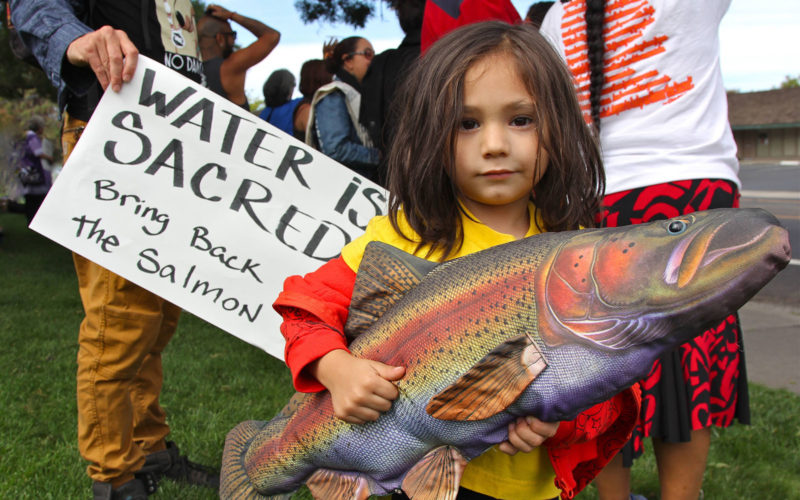 People of all ages join the run.
People of all ages join the run.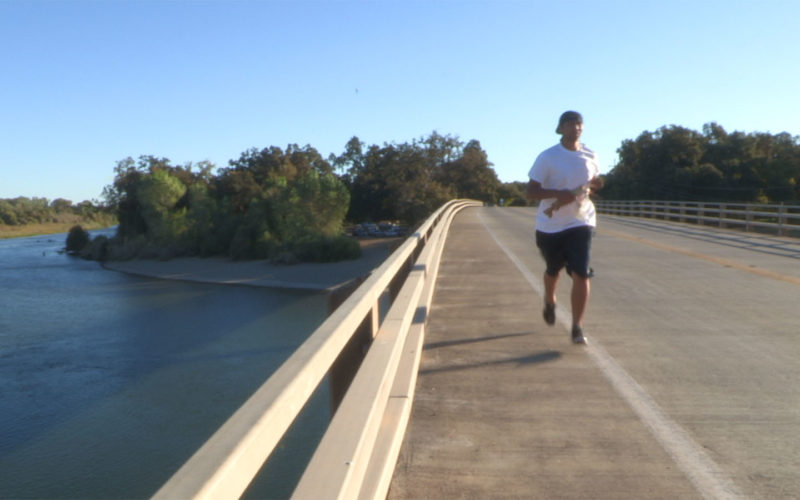 The 200 mile journey takes two weeks.
The 200 mile journey takes two weeks.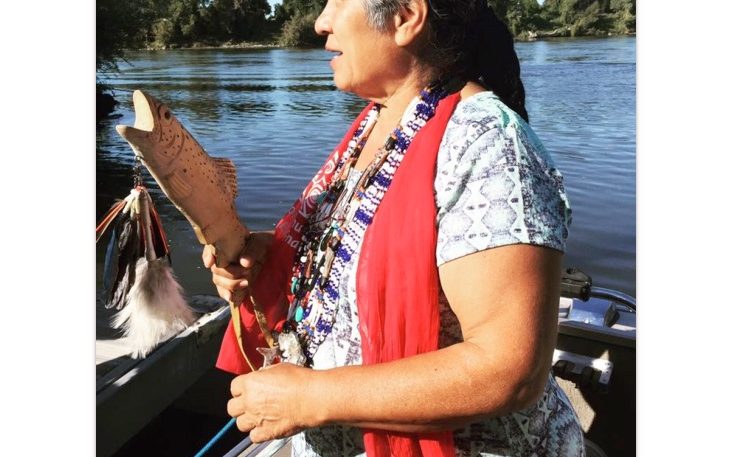 Chief Caleen Sisk leads the Run.
Chief Caleen Sisk leads the Run.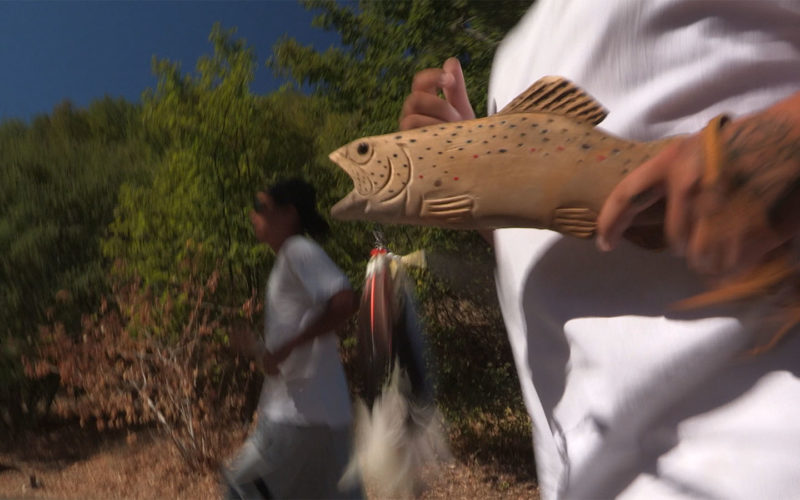
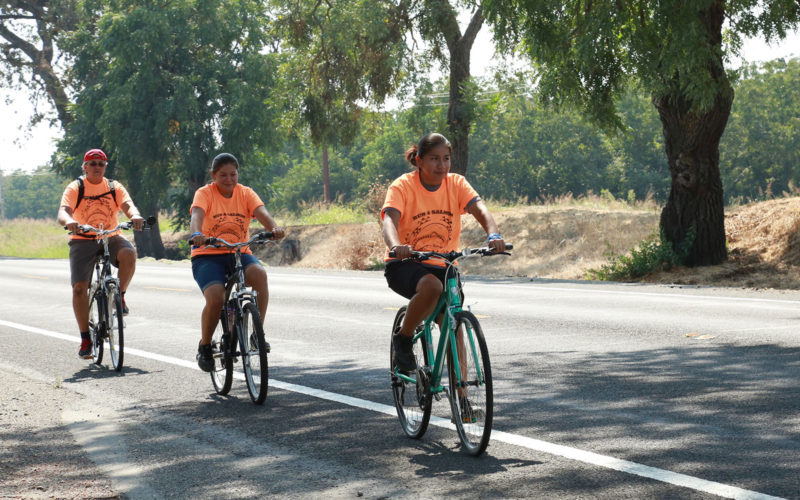
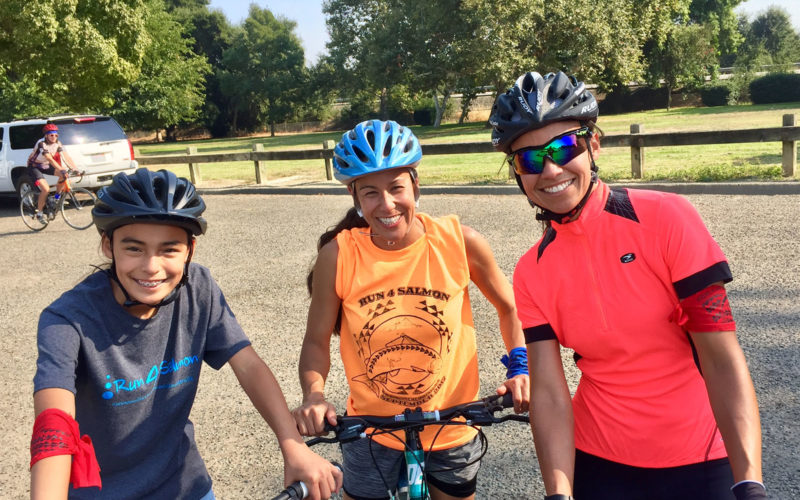
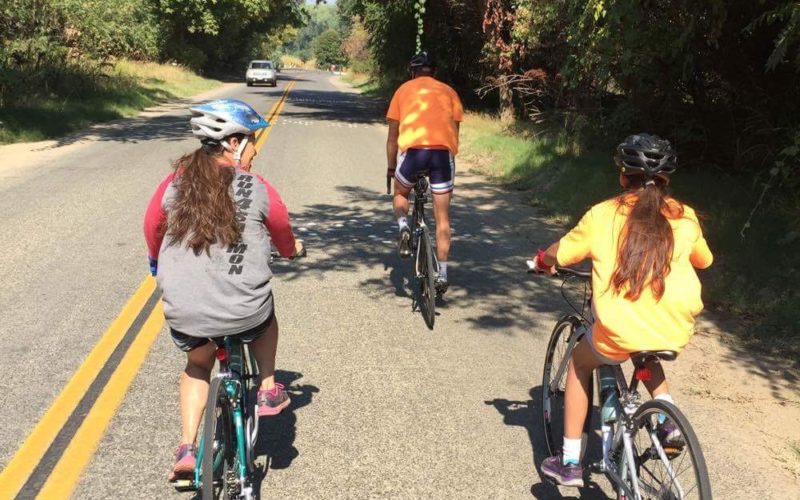

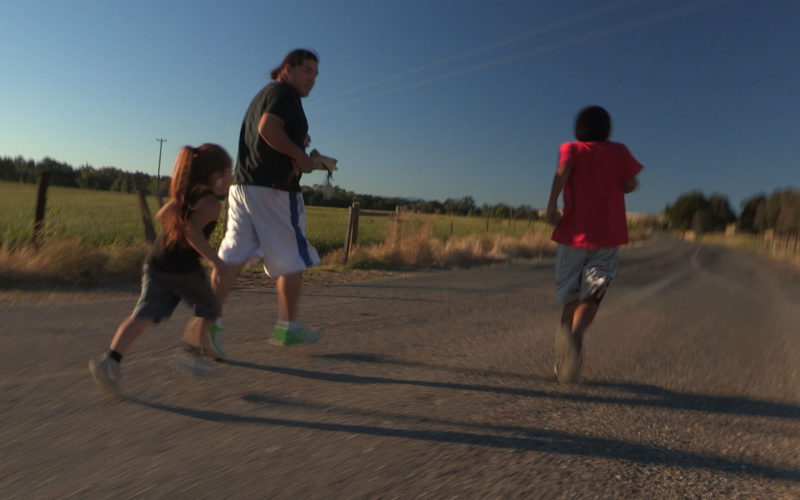
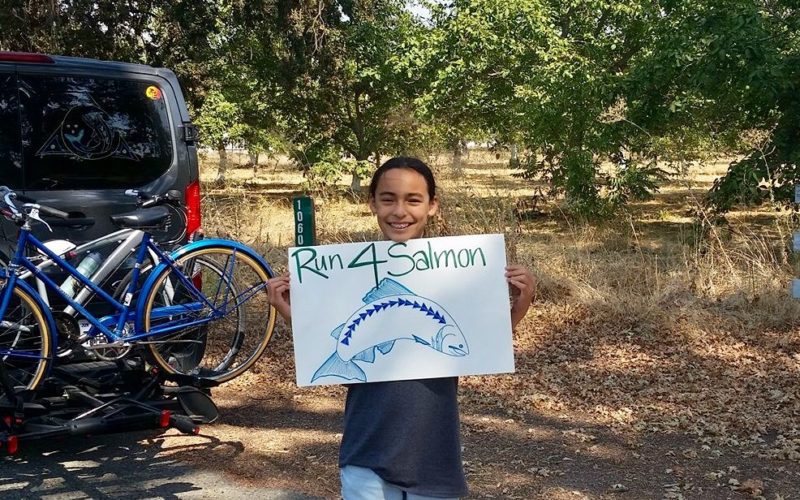

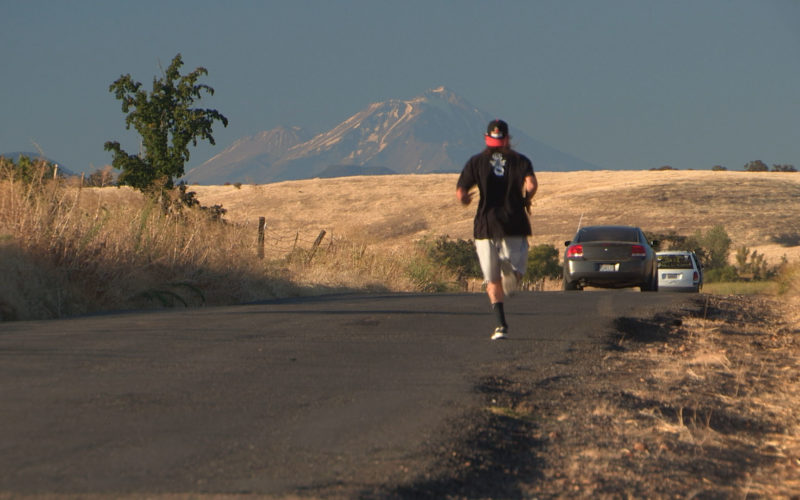
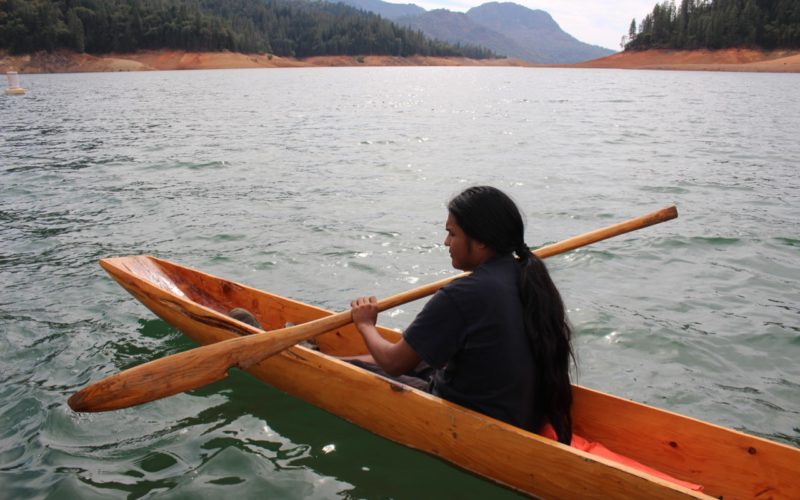

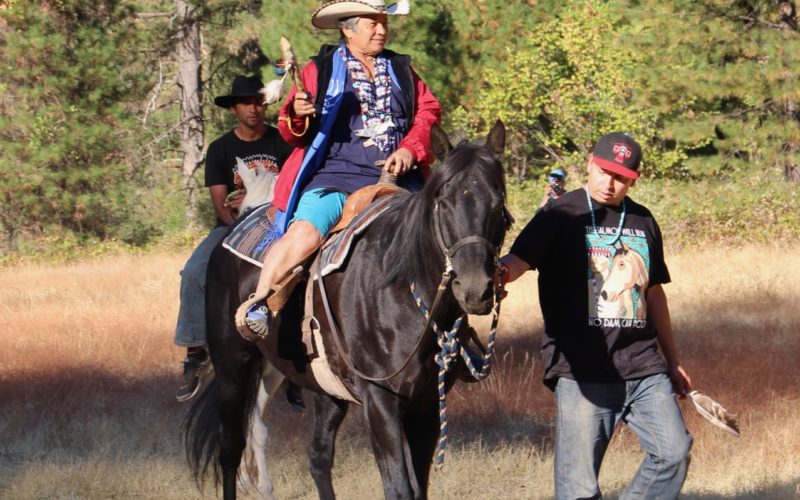

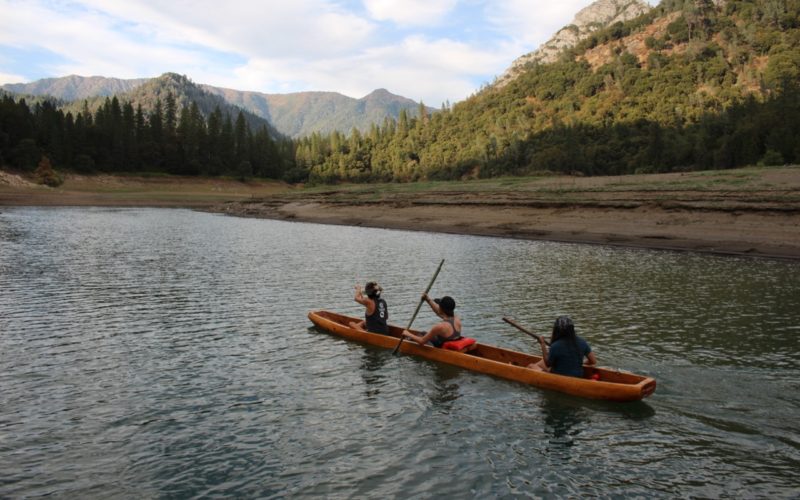
 On the last day, the horses and the paddlers arrive at the McCloud River bridge.
On the last day, the horses and the paddlers arrive at the McCloud River bridge.
